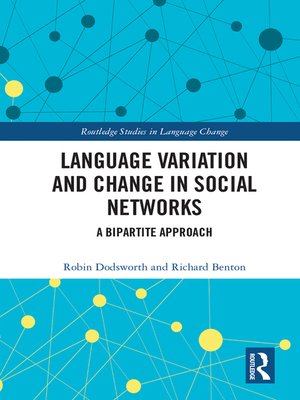Language variation and change in social networks
ebook ∣ A bipartite approach · Routledge Studies in Language Change
By Robin Dodsworth

Sign up to save your library
With an OverDrive account, you can save your favorite libraries for at-a-glance information about availability. Find out more about OverDrive accounts.
Find this title in Libby, the library reading app by OverDrive.



Search for a digital library with this title
Title found at these libraries:
| Library Name | Distance |
|---|---|
| Loading... |
This monograph takes up recent advances in social network methods in sociology, together with data on economic segregation, in order to build a quantitative analysis of the class and network effects implicated in vowel change in a Southern American city.
Studies of sociolinguistic variation in urban spaces have uncovered durable patterns of linguistic difference, such as the maintenance of blue collar/white collar distinctions in the case of stable linguistic variables. But the underlying interactional origins of these patterns, and the interactional reasons for their durability, are not well understood, due in part to the near-absence of large-scale network investigation. This book undertakes a sociolinguistic network analysis of data from the Raleigh corpus, a set of conversational interviews collected form natives of Raleigh, North Carolina, from 2008-2017. Acoustic analysis of the corpus shows the rapid, ongoing retreat from the Southern Vowel Shift and increasing participation in national vowel changes. The social distribution of these trends is explored via standard social factors such as occupation as well as innovative network variables, including a measure of nestedness in the community network.
The book aims to pursue new network-based questions about sociolinguistic variation that can be applied to other corpora, making this key reading for students and researchers in sociolinguistics and historical linguistics as well as those interested in further understanding how existing quantitative network methods from sociological research might be applied to sociolinguistic data.







